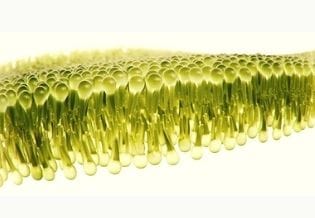Molecular Mechanisms of Lipid Biology
International Journal of Lipids (IJL) publishes fundamental research on lipid structure, biosynthesis, metabolism, and molecular interactions. We focus on cellular and molecular mechanisms underlying lipid function in biological systems, from gene expression to protein-lipid interactions.
Core Research Domains
IJL publishes original research in four core domains that define the molecular biology of lipids. These areas represent our primary editorial focus and receive priority review.
Lipid Structure & Biosynthesis
Molecular mechanisms of lipid synthesis, structural characterization, and enzymatic pathways.
- Fatty acid biosynthesis and elongation pathways
- Sterol and steroid biosynthetic mechanisms
- Phospholipid and sphingolipid synthesis
- Glycerolipid and glycerophospholipid assembly
- Polyketide and prenol lipid biosynthesis
- Enzyme structure-function relationships in lipid synthesis
Crystal structure of fatty acid synthase complex revealing substrate channeling mechanisms in palmitate synthesis.
Lipid Metabolism & Regulation
Cellular pathways controlling lipid catabolism, modification, and homeostatic regulation.
- Beta-oxidation and fatty acid catabolism
- Lipid peroxidation mechanisms and oxidative modifications
- Transcriptional regulation of lipid metabolism genes
- Post-translational modifications of lipid enzymes
- Lipid droplet formation and dynamics
- Cellular lipid homeostasis and feedback mechanisms
SREBP-mediated transcriptional control of cholesterol biosynthesis genes in response to cellular sterol depletion.
Membrane Biophysics & Lipid-Protein Interactions
Physical properties of lipid membranes and molecular interactions with proteins.
- Membrane lipid organization and domain formation
- Lipid-protein binding mechanisms and specificity
- Membrane curvature and lipid packing geometry
- Lipid raft composition and dynamics
- Transmembrane protein-lipid interactions
- Amphipathic lipid behavior in biological membranes
Molecular dynamics simulations of phosphatidylinositol-4,5-bisphosphate binding to pleckstrin homology domains.
Lipid Signaling & Cell Biology
Lipid mediators in cellular signaling cascades and regulatory networks.
- Eicosanoid and prostaglandin signaling pathways
- Sphingolipid signaling in cell fate decisions
- Endocannabinoid system and receptor interactions
- Phosphoinositide signaling cascades
- Lipid second messengers in signal transduction
- Lipid modifications in protein trafficking and localization
Ceramide-induced activation of protein phosphatase 2A and downstream effects on cell cycle progression.
Secondary Focus Areas
Cross-disciplinary research and methodological innovations that advance lipid biology through novel approaches and technologies.
Lipidomics & Analytical Methods
- Mass spectrometry-based lipid profiling
- Lipidome characterization and quantification
- Novel separation and detection technologies
- Computational lipidomics and data analysis
- Lipid imaging and spatial distribution
Lipid Genetics & Genomics
- Genetic regulation of lipid metabolism
- Gene expression profiling in lipid pathways
- Functional genomics of lipid enzymes
- Genetic models for lipid metabolism studies
- CRISPR-based approaches to lipid biology
Lipid Biotechnology
- Engineered lipid biosynthesis pathways
- Microbial lipid production systems
- Enzyme engineering for lipid synthesis
- Synthetic biology approaches to lipid metabolism
- Biocatalysis in lipid modification
Lipid Transport & Trafficking
- Lipoprotein structure and assembly mechanisms
- Intracellular lipid transport proteins
- Vesicular lipid trafficking pathways
- Lipid transfer protein mechanisms
- Membrane contact sites and lipid exchange
Emerging Research Areas
Selective Consideration New Frontiers
We selectively consider manuscripts in emerging areas that demonstrate strong molecular/cellular focus. These submissions undergo additional editorial review to ensure alignment with journal scope.
Computational Lipid Biology
- Machine learning for lipid structure prediction
- AI-driven lipidomics data analysis
- Computational modeling of lipid-protein interactions
- Network analysis of lipid metabolism pathways
Specialized Lipid Classes
- Saccharolipid biosynthesis and function
- Isoprenoid lipid metabolism
- Carotenoid biosynthetic pathways
- Lipid-soluble vitamin molecular mechanisms
Article Types & Editorial Priorities
Expedited Review
- Original Research Articles
- Systematic Reviews & Meta-Analyses
- Review Articles & Literature Reviews
- Mini-Reviews
- Methods & Protocols
- Resource Articles (Databases & Tools)
Regular Review
- Short Communications & Rapid Communications
- Technical Notes
- Data Notes
- Perspectives & Commentaries
- Opinion Pieces
- Editorials
- Letters to the Editor
- Conference Proceedings & Meeting Reports
- Book Reviews
Limited Acceptance
- Case Reports & Case Series
- Clinical Trials
- Theses & Dissertations
Editorial Standards & Requirements
Reporting Guidelines
All manuscripts must adhere to discipline-specific reporting standards:
- ARRIVE 2.0: Animal research
- MIQE: qPCR experiments
- MIAME: Microarray data
- STROBE: Observational studies (if mechanistic)
- PRISMA: Systematic reviews
Data Transparency
We require open access to research data and materials:
- Raw data deposition in public repositories
- Lipidomics data in LIPID MAPS or MetaboLights
- Protein structures in PDB
- Gene sequences in GenBank/EMBL
- Code availability for computational studies
Ethics & Integrity
Strict adherence to research ethics standards:
- Institutional review board approval (human samples)
- Animal care committee approval (animal studies)
- Informed consent documentation
- Conflict of interest disclosure
- Adherence to Singapore Statement on Research Integrity
Preprint Policy
We support preprint sharing and transparent science:
- Preprints allowed on bioRxiv, ChemRxiv, arXiv
- Must disclose preprint DOI at submission
- Preprint does not affect consideration
- Authors retain copyright of preprints
- Final version must acknowledge journal publication
Publication Metrics
Ready to Submit?
If your research focuses on molecular mechanisms of lipid biology, we invite you to submit your manuscript. For scope inquiries, contact our editorial office before submission.
Contact Editorial Office

